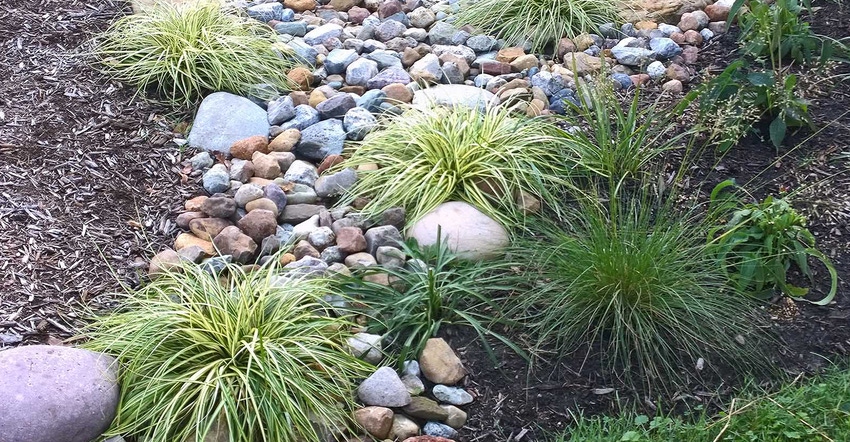January 17, 2019

Old-school gardeners mulch planting beds every year. Mulch also shades the soil, cooling it and keeping it moist.
For perennials and grasses, 1 to 2 inches is applied; for trees and shrubs, 2 to 3 inches. Ground leaf mulch or shredded hardwood mulch goes down before the end of March to deter the inevitable onslaught of weeds in April. Plants are spaced wide apart with a border of mulch between each, keeping gardens tidy and cared for. This is a common style of gardening.
Mulching gardens are similar to wild plant communities, which are long-established ecosystems where geology, soils, micro-organisms, fungi, insects, mammals, reptiles, birds and plants exist as a cohesive whole.
In wild plant communities, plants exist only a few inches apart. A dozen or more plant species can exist in 1 square meter of tallgrass prairie and share the space with 15 species of beetle, 14 species of bees, 21 species of flies and many other species of butterflies, moths, spiders, bugs, ants, aphids, grasshoppers, mites and katydids, according to Chris Helzer, a prairie ecologist for The Nature Conservancy in Nebraska.
 MESSY MIX: These natural prairie looks offer an abundance of color and habitat for wildlife. But they can be disheveled in appearance.
MESSY MIX: These natural prairie looks offer an abundance of color and habitat for wildlife. But they can be disheveled in appearance.

This is nature at its best, with high species diversity. On the other hand, in a designed plant community, living diversity is much lower, although the intention is to attain as much diversity as possible.
Planning placement
Like a natural community, designed communities have close plant spacing, about 6 to 12 inches compared to a traditional arrangement where spacing is about two feet apart.
With plants growing so closely together, weed spread is reduced, especially after plants fully mature. This takes about one to two years on average, depending on the species and spacing. The closer the spacing, the quicker the grow-in and the quicker weeds are crowded out. When the ground is completely covered over with plants, there is no longer a need for mulch. Also, plants shade the soil, which assists with maintaining soil moisture.
There are two common prairie plants that grow very low in tallgrass prairies and assist with covering the ground like a mulch: wild strawberry and field pussytoes. These 1-to-3-inch-tall species grow between taller prairie plants like a weave in a carpet. For such tiny plants, they take up a lot of real estate per square meter of prairie. They bloom and grow in spring when sunlight is plentiful and later are shaded as taller prairie plants grow over them. They do what mulch does in a traditional garden and can be useful species in designed plant communities. They cool and maintain soil moisture and prevent weeds from getting established.
Gardening takes time
Self-mulching or designed plant communities are like self-driving cars: they are unbelievable at first glance. They both increase living diversity while decreasing maintenance. They aren’t maintenance-free by any means but take half as much time to maintain compared to a traditional landscape.
For large-scale landscapes, time management is critical. I’ve seen too many gardens fail because they were too big to care for. As a society, we either need to begin to fully realize the cost of traditional landscape maintenance or use smarter designed plant communities to leverage ever-shrinking resources.
Woodbury is a horticulturalist and Curator of the Whitmire Wildflower Garden at Shaw Nature Reserve in Gray Summit, Mo., where he has worked with native plant propagation, design, and education for 27 years. He also is an advisor to the Missouri Prairie Foundation’s Grow Native! program.
About the Author(s)
You May Also Like




